The Golden Age of Microblogging, with Soup.io and Tumblr
I take a nostalgic trip back to 2007-11, when Tumblr, Soup.io, FriendFeed and other microblogging apps roamed the web. Also: are activity streams poised to make a comeback on the fediverse? 🍲
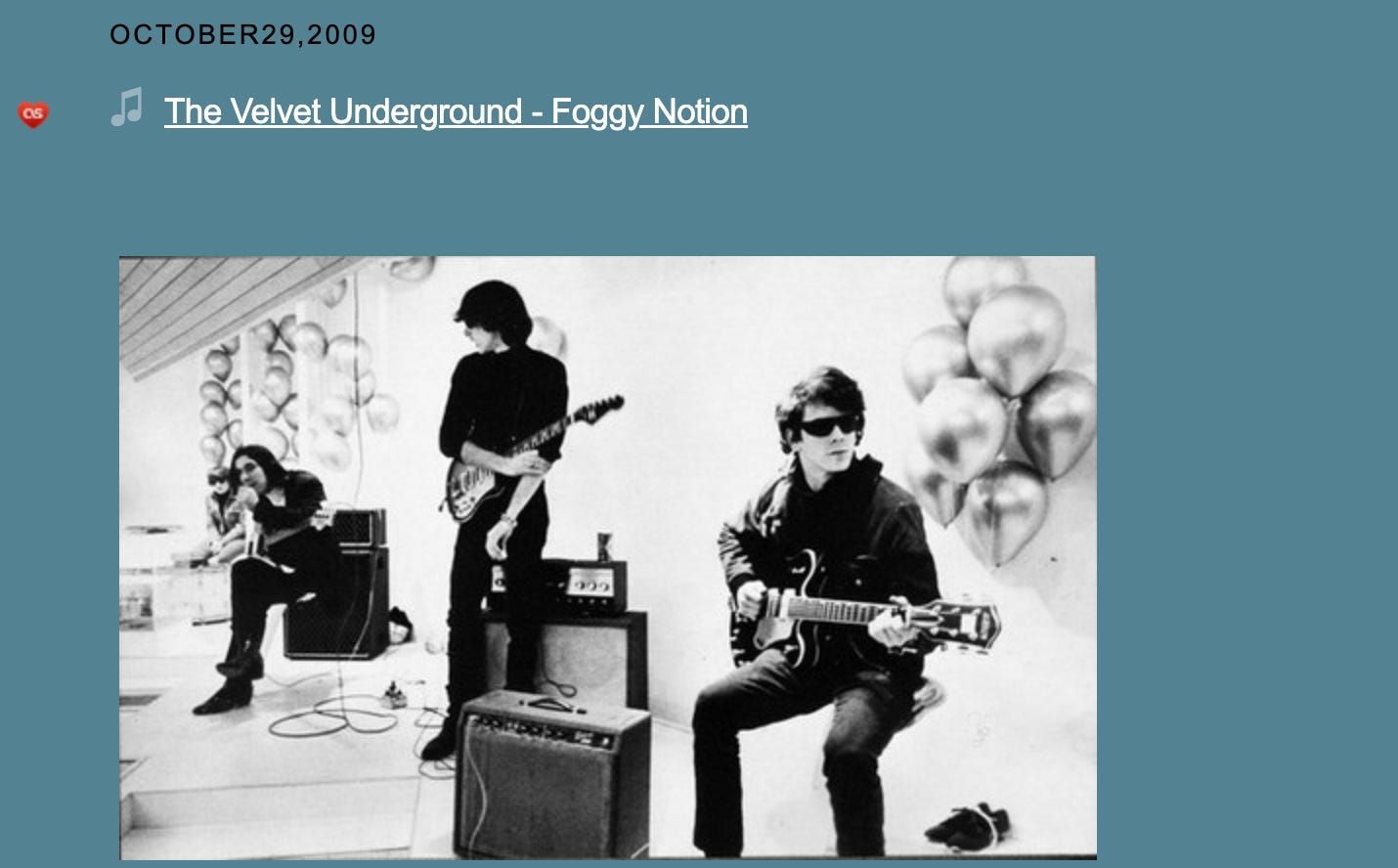
Microblogging was a trend that emerged in the second half of the 2000s, after long-form weblogs had become established in the culture. Microblogging is basically just short-form blogging and, as I’ll lay out in this post, its heyday was in the 2007-11 period. But microblogging is now making a comeback, in the form of Mastodon and other “fediverse” apps. So I’ll touch on that later in this post, too.
The appeal of microblogging in the 2000s was to take a lighter approach to online publishing — both in terms of the posts themselves being shorter, and in terms of taking a more fun, less serious approach to blogging. Certainly, I was guilty of writing please-take-me-seriously news and analysis posts on my tech blog, ReadWriteWeb. But not everyone wanted to compose long, wordy posts like me.
Aside: “Tumblelogs” was another common term for microblog. OG blogger Jason Kottke defined a tumblelog in October 2005 as “a quick and dirty stream of consciousness, a bit like a remaindered links style linklog but with more than just links.”
Microblogging in 2007
The first popular product that I recall being called “microblogging” was Twitter, in that 2006/07 timeframe when nobody quite knew what Twitter was. However, I personally never saw Twitter as a blog-like product — to me, it was more akin to an Instant Messenger product, except that your chats were public. Twitter really was a headmash at that point (actually, it still is!).
Although it didn’t invent tumblelogs, Tumblr popularized them shortly after its launch in February 2007. From the get-go, Tumblr defined itself as a way to create tumblelogs, which it said were “blogs with less fuss and more stuff.”
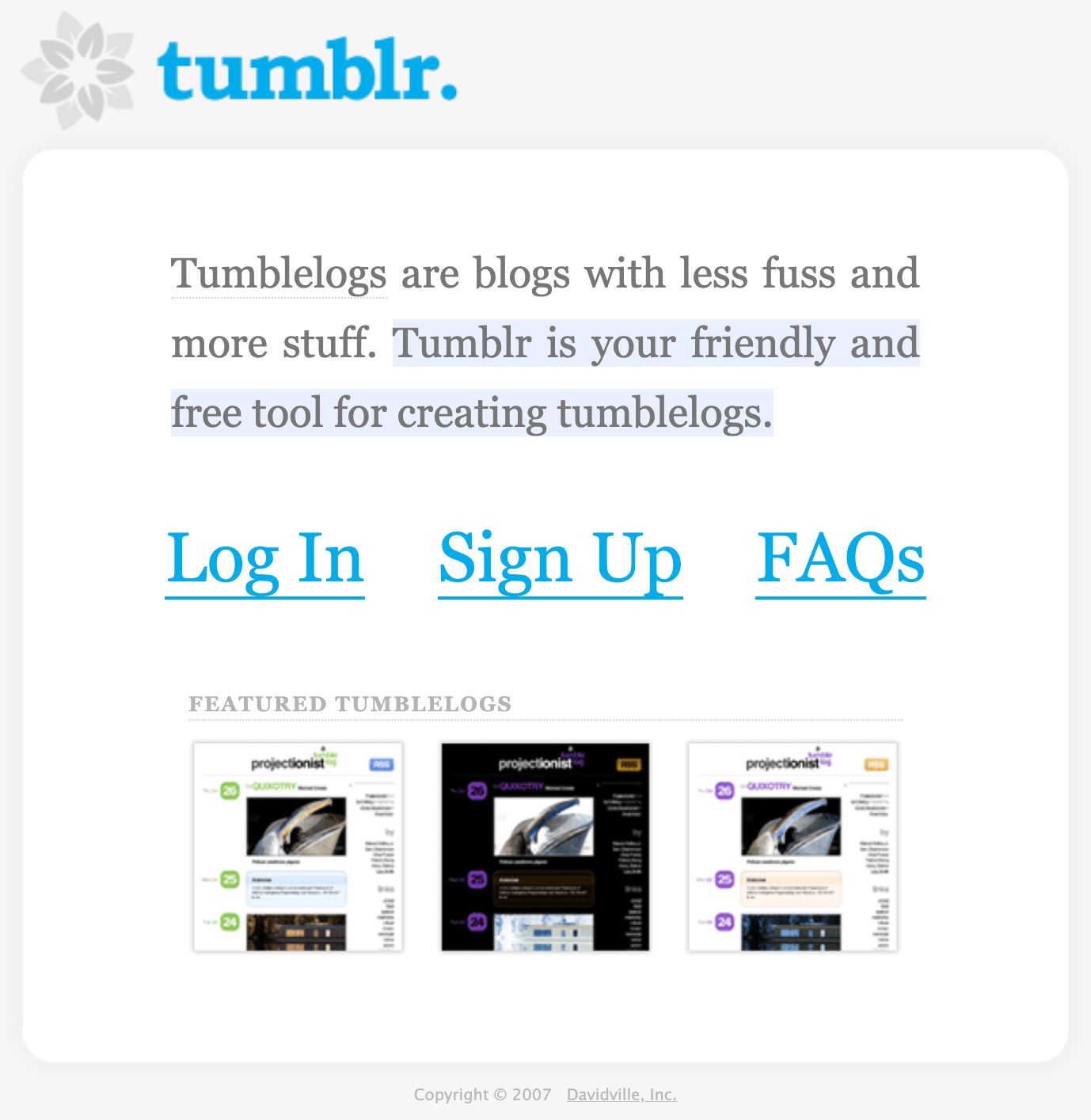
The first time ReadWriteWeb wrote about Tumblr was in July 2007. It was one of our guest contributers, Aiden Henry, in a post entitled “Top 5 Hottest Product Launches of 2007.” Tumblr was one of them, but Aiden noted that it wasn’t in the same league as Twitter at that point:
“[…] Tumblr can attribute a large part of its fame to the success of a competitor - Twitter in this case. The recent growth of the micro-blogging space has been phenomenal. Other notables in the space include Jaiku, Pownce, Moodmill, and Hictu.”
A couple of months later, another RWW writer (Josh Catone) profiled Soup.io. This app was clearly inspired by Tumblr, but seemed to offer more “lifestreaming” features. Lifestreaming was yet another term for social media back in Web 2.0. Many old-school bloggers will fondly remember FriendFeed from that time — although I’m jumping ahead slightly, as that wasn’t released (in a private beta) until October 2007. In any case, lifestreaming meant aggregating your various internet feeds in one place. Josh nicely described how Soup did it circa September 2007:
“One of Soup's killer features is the ability to import outside activity streams. You can import your activity from Digg, Flickr, del.icio.us, eBay, LiveJournal, StumbleUpon, Twitter, Vox, YouTube, Zooomer, and even Tumblr. Soup can also read from any RSS feed meaning you can import your activity from just about anywhere. Posts are automatically created on your Soup when new activity comes in from your feeds on other services. Those posts are marked with icons marking which service the information came from.”
2008: From FriendFeed to Soup.io
It was the activity streams feature that most attracted me to Soup, since I had accounts on multiple web services and I wanted to aggregate them on one webpage. To briefly define an “activity stream,” it is a list (or feed) of activities from a single web app or site. So, all your Flickr photos, for example.
I think I first began looking into Soup in early 2008. So, you might ask, if I was mainly interested in activity streams, then why didn’t I just continue to use FriendFeed instead of starting a Soup? After all, FriendFeed was more popular amongst bloggers at this time. The answer is that FriendFeed was too geeky.
On FriendFeed, I not only aggregated the fun stuff (like last.fm for music, AllConsuming for tv/movies, and Goodreads for books), but also my RWW posts, what I “dugg” on Digg (a popular tech news aggregator), my LinkedIn updates, my tweets, and much more. FriendFeed was a comprehensive feed of everything I used on the internet, for both work and play. Everyone else seemed to use it in the same manner, too — you just threw the whole kitchen sink in there.
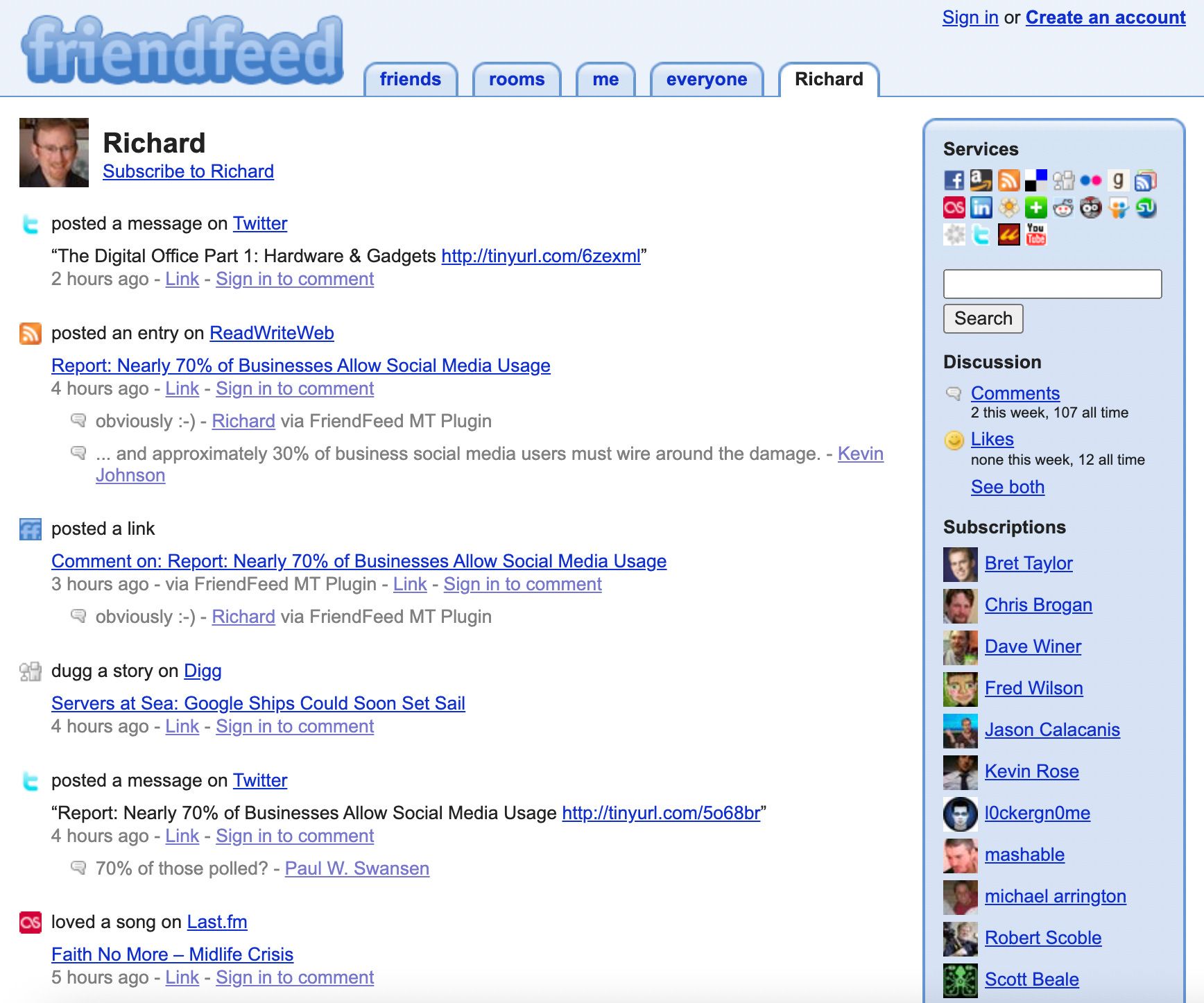
What I wanted for a tumblelog, however, was something that represented the non-geek me. A place to aggregate my cultural interests, rather than my tech work.
Tumblr was enticing, because it was easy to share cultural content (music, tv/movies, book excerpts, and so on). But it didn’t hook into any of the specialist services I already used — last.fm, Goodreads, et al. Here’s where Soup stood out. Not only could I aggregate my entries from those external services, but it would import the full content.
Velvets Fan
To emphasize that this was the non-tech side of me, I named my Soup “Velvets Fan” — because I was a big fan of The Velvet Underground. I already used the same handle (velvetsfan) on StumbleUpon, one of the many random social web services I used at this time. Plus I owned the domain, velvetsfan.com, and was only using it for testing purposes. So I figured I would use it for my Soup.io address, since it allowed you to set a custom domain. Thus, velvetsfan.com was born.
Over 2008, I primarily used Soup to aggregate content I wrote elsewhere. In the screenshot below, it pulled in things I wrote at last.fm (a music service pre-Spotify) and Goodreads (at the time an indie book social network; now owned by Amazon).

You’ll notice that my initial microblogging efforts were very text-heavy — and also too long to be called “micro” (that Neil Young entry went on for several more paragraphs!). Partly this was because although Soup would import third-party content, often it wouldn’t bring across the associated multimedia files. As with Tumblr, you could upload it yourself if you wanted to. But as I say, I was into activity streams — I liked the idea that each category of content had its own web app.
In 2009, I began to write directly into Soup more — for instance telling the world about the acrylic painting course I was doing. Nobody wanted or needed to know that, but I figured I may as well “blog” something cultural, in addition to importing my activity streams.
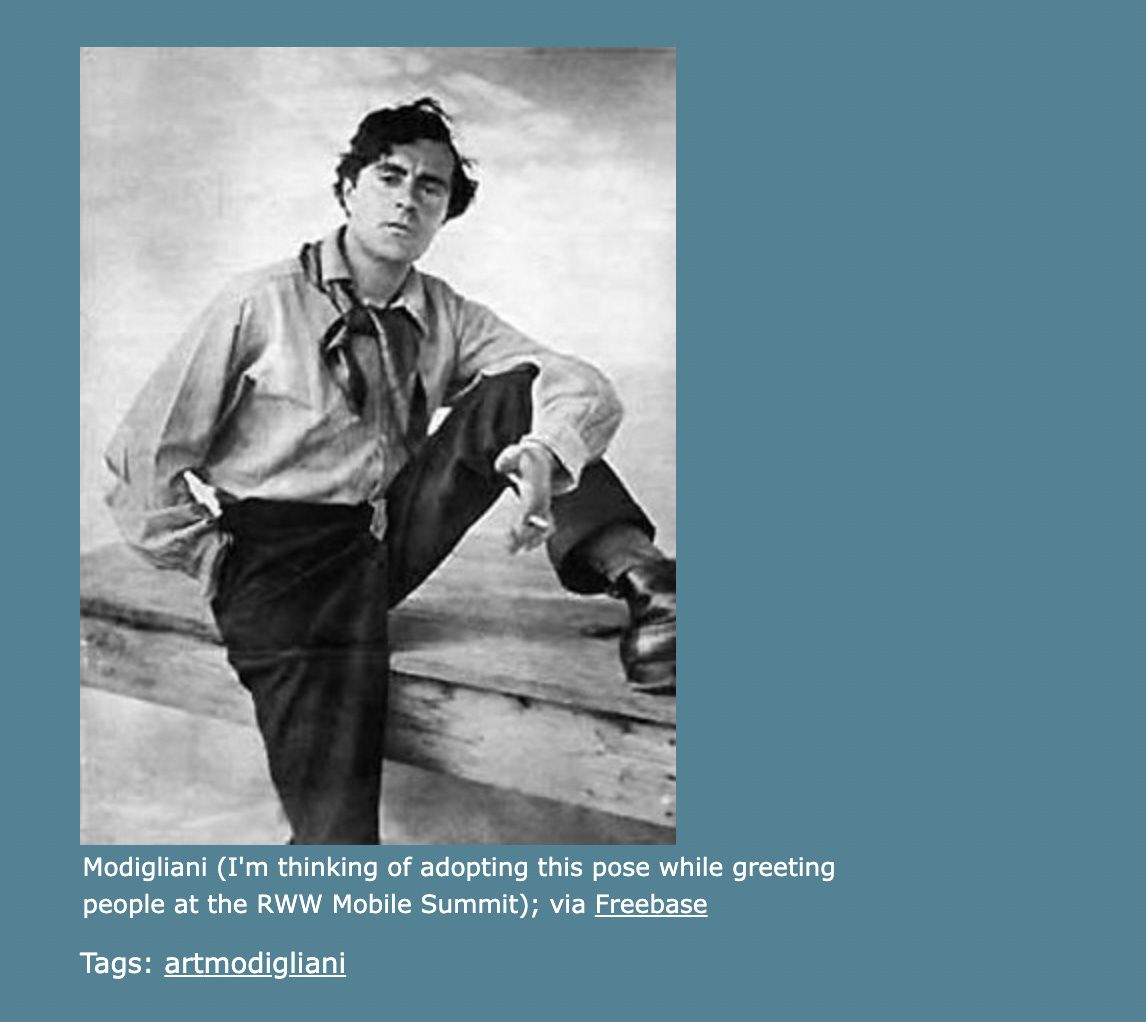
2010 was an active year on Soup, but I clearly wasn’t ‘getting it’ in regards to short-form blogging. I wrote up a “SXSW Music Wrap-up” post that was longer than many of my RWW posts!

I stopped using Soup at the end of 2010 and started a new personal WordPress site. Maybe I just wasn’t cut out for microblogging.
2011: The Move to Tumblr
In April 2011, I started using Tumblr. Judging by my end-of-year comments comparing Tumblr to Soup, it was clear I just liked the ease-of-use of Tumblr (sharing multimedia at the press of a button) and the network of people it had. But I felt soooo guilty about leaving Soup.
“This year I made the switch to Tumblr, despite being a fan of my previous light blogging service Soup.io. I wasn't disappointed. Tumblr has a beautiful user interface and with a click of a browser button I could easily blog videos, photos and text that I came across on the Web. I also liked how simple Tumblr's iPad and iPhone apps are to use. Although I felt guilty leaving the smaller, scrappier startup Soup.io, it was also nice to connect with my friends on the Tumblr network.”
(the above is from my Dec 2011 RWW post, Richard's Top 10 Web Products of 2011)
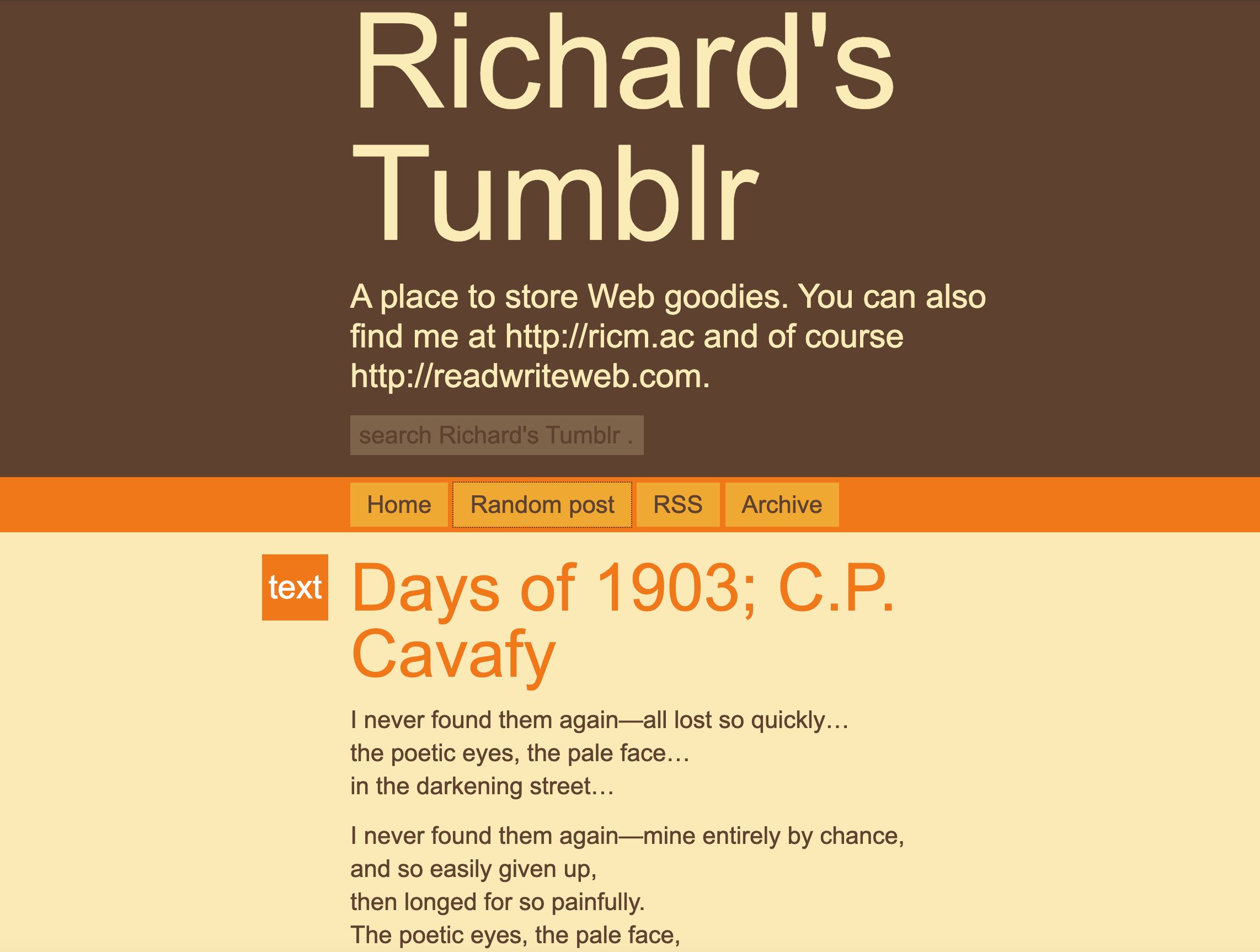
I continued to use Tumblr regularly until about mid-2014, when my usage dwindled. I sparodically used it from 2015 until…well, now really. My Tumblr still exists, and I occassionally pop in there to share something cultural. It’s now owned by Automattic, the creators of WordPress, so I feel like it’s in good hands.
Soup, unfortunately, eventually got taken down by its founders and the domain name was sold off to someone who is now using it in a completely unrelated way — a bit like what happened to ReadWriteWeb! To add insult to injury, Soup didn’t even get archived in a coherent way by the Wayback Machine. So you can’t even see what old Soup content looked like. Fortunately, I had saved a bunch of screenshots to my Evernote before it got taken down (that’s what you see above).
The Fediverse and Activity Streams
Soup is gone, but not forgotten (at least by me). Indeed, activity streams are having a moment again, thanks to the emerging fediverse. You may not have heard the term “fediverse” before, but there’s a good chance you’ve heard of Mastodon — the Twitter alternative that many people are flocking to, post Elon Musk’s takeover of Twitter. Mastodon is “federated social media,” meaning it’s not owned by a single company.
I won’t bore you with technical details, but let me just say that the protocol that Mastodon was built on — ActivityPub — was partly derived from an earlier protocol called “Activity Streams.” You can read my reporting about this on The New Stack if you’re curious to know more.
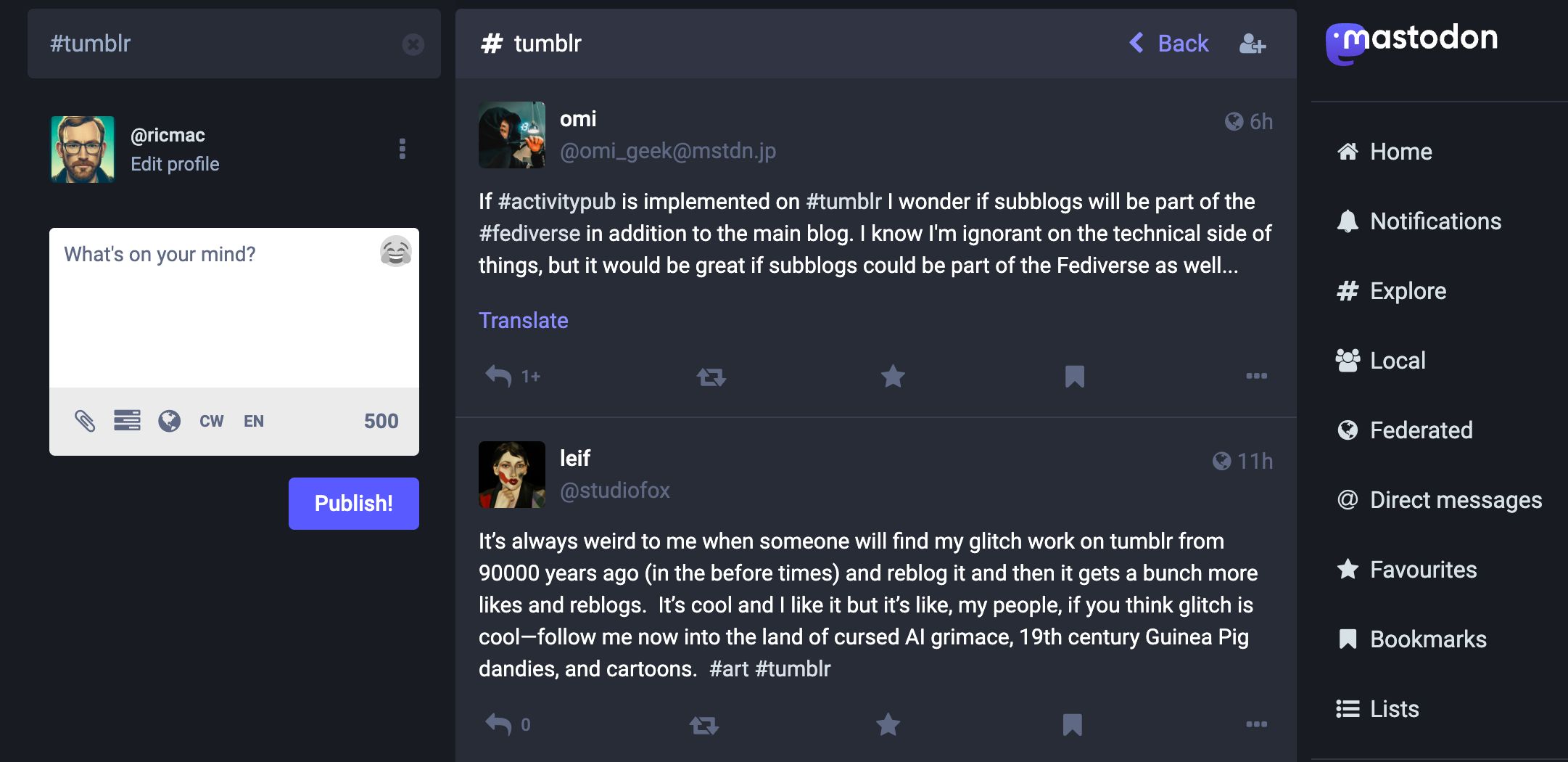
To cut to the chase, on the fediverse you can choose to follow accounts on different apps, inside of Mastodon (and vice versa). There’s a fediverse version of YouTube, a Flickr clone, etc. There has even been talk of Tumblr joining the fediverse, which would be fantastic! If that happens, I’d most likely subscribe to various fediverse multimedia apps inside of Tumblr. Then I’d be able to easily share things that pop up from those apps to my Tumblr readers. I really hope Tumblr does join the fediverse. 🤞
It makes me wish, though, that there was a Soup.io for the fediverse era. That was an app that understood activity streams.
Postscript: The Return of Velvets Fan
I had let the velvetsfan [dot] com domain slide a bunch of years ago, after Soup’s demise, but I saw that it was available again when I was writing this post. So I bought it once more and I’m now using it for my Tumblr. Maybe I’ll see you on the fediverse?
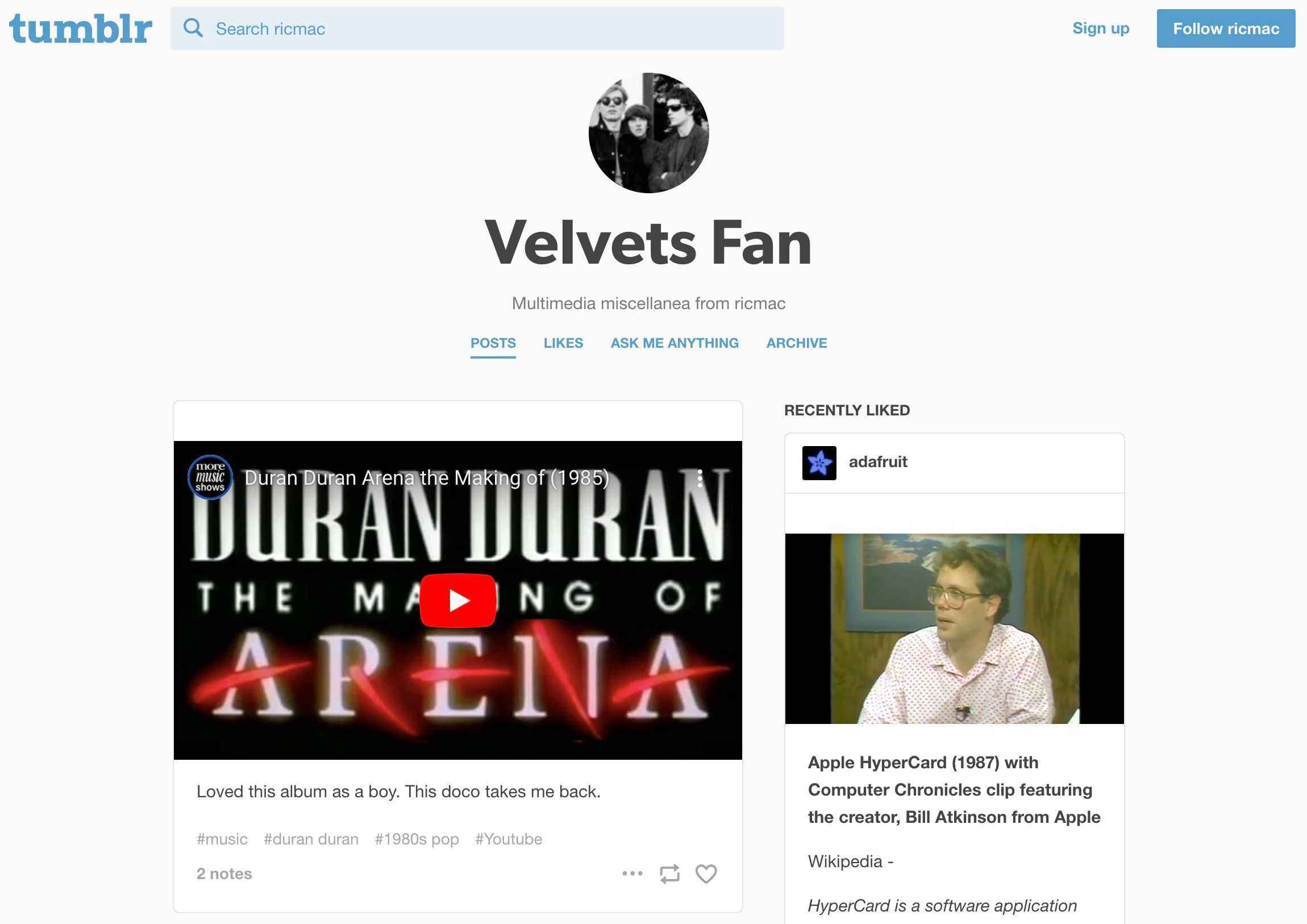
Buy the Book
My Web 2.0 memoir, Bubble Blog: From Outsider to Insider in Silicon Valley's Web 2.0 Revolution, is now available to purchase:
- Paperback, US$19.99: Amazon; Bookshop.org
- eBook, US$9.99: Amazon Kindle Store; Apple Books; Google Play
Or search for "Bubble Blog MacManus" on your local online bookstore.